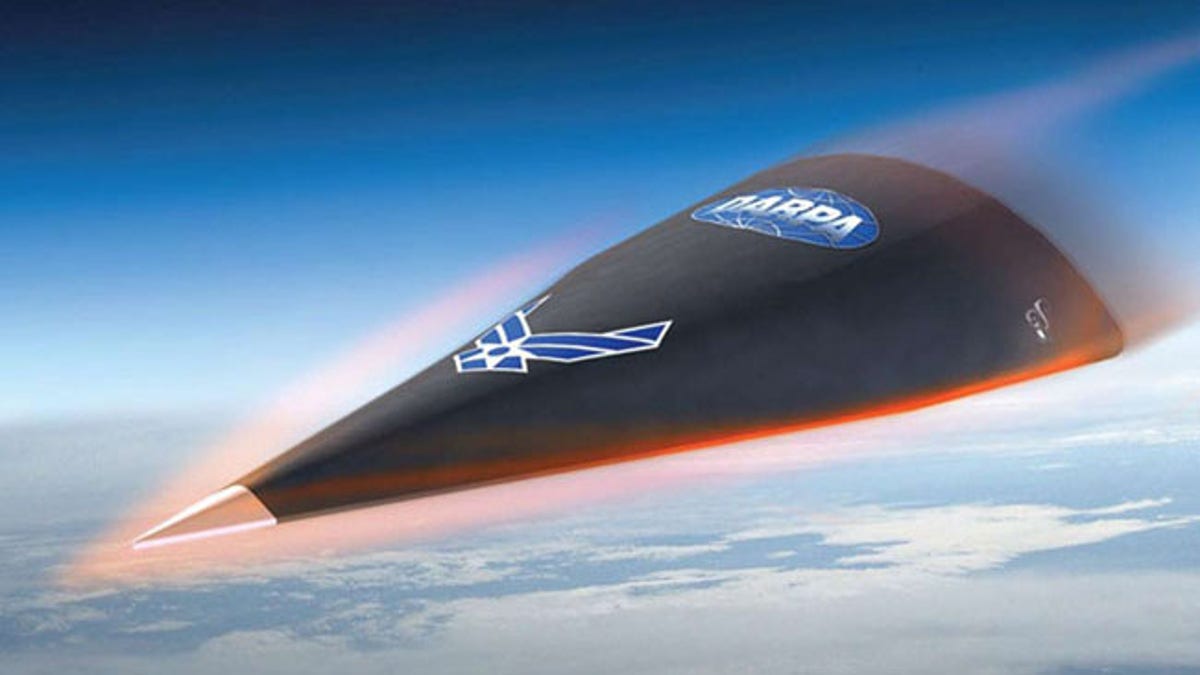
The DARPA Falcon Hypersonic Technology Vehicle (HTV)-2, one of several hypersonic test projects underway by various U.S. military agencies. (DARPA)
The U.S. Army's hypersonic weapon prototype streaked across the Pacific Ocean at several times the speed of sound Thursday, Nov. 17, in a flawless maiden test flight. The success could pave the way for a new military capability to strike targets anywhere on Earth in as little as an hour.
Such a hypersonic weapon concept flies at a relatively flat trajectory within the atmosphere, rather than soaring up toward space like a ballistic missile and eventually coming back down. Hypersonic speed is defined as being at least five times the speed of sound (3,805 mph, or 6,124 kph, at sea level).
The Army's success Thursday was built upon lessons learned from two hypersonic test flights carried out by the Pentagon's research arm, called DARPA, in April 2010 and August 2011.
The Army's Advanced Hypersonic Weapon launched aboard a three-stage booster system from the Pacific Missile Range Facility on the island of Kauai in Hawaii at 6:30 AM ET, deployed for its hypersonic glide, and eventually splashed down in the Reagan Test Site located near the Kwajalein Atoll.
Pentagon officials kept a careful watch on the flight test from space, air, sea and ground. That allowed them to collect data about aerodynamics, navigation, guidance, and control performance, as well as thermal protection technologies meant to shrug off intense heat during hypersonic flight.
- Inside the Air Force’s 13,000-MPH Hypersonic Plane
- DARPA Reveals Fate of Hypersonic Mach 20 Plane
- DARPA Loses Hypersonic Vehicle, Goes From $320M to Zero in 2,700 Seconds
- Experimental Aircraft to Go From Zero to 13,000 in Hypersonic Test Launch
- Military’s Hypersonic Falcon Missile Test a Dud?
- Hypersonic X-51A Scramjet Failure Perplexes Air Force
Such success may provide some consolation to DARPA, given that its Falcon Hypersonic Technology Vehicle 2 (HTV-2) experienced problems in its two test flights that led to early crashes. HTV-2 reached a speed of Mach 20 during its latest test in August.
The Air Force has also tested its own X-51A Waverider vehicle, most recently on June 13, as an experimental platform for an air-breathing scramjet engine. During the latest test, the X-51A Waverider reached hypersonic speeds of at least Mach 5 before it failed to switch over to its main fuel source.
Having several hypersonic projects resembles the early days of U.S. rocket and missile development, when the Army and Air Force competed to get their rockets off the ground. But any success in the hypersonic realm seems likely to benefit the U.S. military's unified goal for a "Conventional Prompt Global Strike" weapon designed to speedily attack targets around the world.
* Ten Military Aircraft that Never Made it Past the Test Phase
* Photos: Breaking the Sound Barrier
* Top 10 Space Weapons
Copyright 2011 InnovationNewsDaily, a TechMediaNetwork company. All rights reserved. This material may not be published, broadcast, rewritten or redistributed.




















